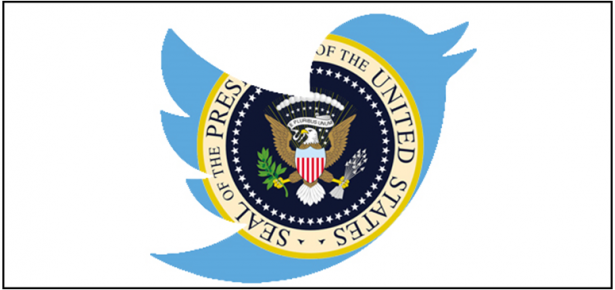
Now that the new American president has expressed his preference for Twitter as a means to bypass traditional media and express his ideas directly to the people of his nation and the world, it’s important for us cyberpsychologists to offer our insights about this mode of communication.
Supporters of Trump like to point out how his predecessors similarly seized on the opportunity to use new technology of their time. For FDR it was radio. For JFK, television. However, Twitter, which is a cousin of the short messaging system (SMS), is quite different than radio and TV. In some ways it is a technological step forward, and in some ways a step backwards. It is a quick and convenient way of reaching others, but it consists of tiny packets of often disconnected, undeveloped ideas without any auditory or visual signals.
Although images can be incorporated into tweets, Trump, like many other people, uses Twitter strictly as a form of text communication. We cannot hear his voice or see his body language, which are extremely important interpersonal cues that help us perceive the emotion and meaning behind the tweet. As a result, there is an intrinsic ambiguity in the text message, which makes it very easy to misread, to see things in it that are not really there, even to project one’s own anxieties and insecurities into it – which might progress into the phenomenon psychologist’s call a “transference reaction” that is the unconscious perception of someone as being a problematic person from one’s past. On the other hand, this ambiguous quality of text communication also makes it relatively easy for the tweeter to deny any emotion or meaning that was consciously, or unconsciously, embedded into it.
These problems can be minimized by writing that is clear and composed with care, which is even more of a challenge in Twitter because each tweet is limited to the 140 characters that is just about enough to express a single complete idea, according to the researcher Friedhelm Hillebrand who helped developed SMS. To be most effective, this “staccato speak” must be concise and to the point, rather than off-the-cuff and rambling.
As a method of interpersonal understanding, SMS works best when the people involved are engaged in a back-and-forth exchange of ideas. That exchange helps each participant correct and modify their expression to and understanding of each other. A one-sided, one-to-many launching of tweets without feedback easily turns into tangential thinking. It becomes an out-loud muttering inside one’s head without sensing or attending to the presence of other people who are trying to understand the tweets. Not having any face-to-face cues, not being able to see the reactions of people receiving the tweets, tends to exaggerate these disinhibited digressions.
This rambling out-loud tends to occur throughout the day, usually surfacing at unpredictable times, as if saying, “here’s what I’m thinking right now, although I might not have the same thought later.” The irony is that tweets are stored as permanent records, so the history of one’s line of thought, or zig-zagging of thoughts, is easily tracked.
The ability to launch a tweet at any time during the day also increases the likelihood of what one of my colleagues once called “an emotional hit and run.” You say something mean or critical, and then disappear without having to deal with the immediate consequences of that comment. As one might say with a 1960s flair, it’s a “cop out.”
Sherry Turkle, a prominent cyberpsychology researcher, was once caught off guard when Stephen Colbert asked her a simple but profound question. “Don’t all those little tweets, don’t all those little sips of online communication, add up to one big gulp of real conversation?” Her reply was no. Connecting via sips may work for gathering discrete bits of information, but it ultimately fails in truly learning about someone in an integrated, comprehensive, holistic, and meaningful way. The tweeter comes across as a splash of jigsaw puzzle pieces that are hard to fit together to form a complete picture.
Mark Twain once said that, “I didn’t have time to write a short letter, so I wrote a long one instead.” In this digital age we might have to update that quote to, “Why should I bother with anything like a letter when I can just tweet instead.”
Latest Comments
Have your say!